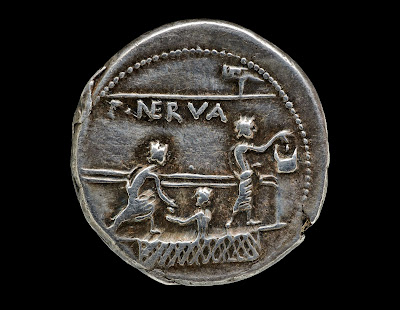My friend Jim died last Tuesday, while working alone on a logging job. He'd been a logger forever, and was very happy to be back in the woods this year, after a frustrating moratorium on forestry operations on State lands kept him from working locally. But this particular job required a significant commute to the site. Long days of driving in the dark, then working hard from daylight to dusk, then driving home in the dark, were taking a toll. When I saw Jim two weeks ago, he talked about how tired he was - something I'd never once heard him say in all the years I've known him. Complain about bureaucracy? Anytime. Complain about lazy people? Oh my, yes. But complain about being tired? From working? Never. It was worrying, but at least I knew this job was almost finished; he intended to be "out of there before Christmas."
Sweetfern, Comptonia peregrina, is neither sweet nor a fern. It looks like something the dinosaurs would have walked through, releasing the warmest, spiciest aromas of imagination.
Tuesday, November 26, 2024
he died in the woods
My friend Jim died last Tuesday, while working alone on a logging job. He'd been a logger forever, and was very happy to be back in the woods this year, after a frustrating moratorium on forestry operations on State lands kept him from working locally. But this particular job required a significant commute to the site. Long days of driving in the dark, then working hard from daylight to dusk, then driving home in the dark, were taking a toll. When I saw Jim two weeks ago, he talked about how tired he was - something I'd never once heard him say in all the years I've known him. Complain about bureaucracy? Anytime. Complain about lazy people? Oh my, yes. But complain about being tired? From working? Never. It was worrying, but at least I knew this job was almost finished; he intended to be "out of there before Christmas."
Tuesday, November 19, 2024
barn update
The goat barn has a new and improved roof:
Tuesday, November 12, 2024
Sunday, November 10, 2024
Tuesday, November 5, 2024
buckle up
"Roman Republican denarius showing citizens voting. One toga-clad citizen drops his voting tablet in the ballot box, while behind him another voter receives his tablet from an attendant below. Voters crossed elevated walkways or 'pontes' above their fellow citizens in order to reach the ballot box, so all could see that they had voted without any last-minute intimidation or interference by others.
To safeguard the integrity of elections, in 119 BC, the tribune Gaius Marius further narrowed the pons causeway leading to the ballot box, in order to prevent any non-voters from standing on the gangway and engaging in bribery or intimidation; literally, to ensure that there was 'no room' for interference."
from Gareth Harney, @OptimoPrincipi on twitter. His new book, Moneta: A History of Ancient Rome in Twelve Coins, is on my short list.
illustration: Denarius struck under the moneyer Publius Licinius Nerva in 112 BC, British Museum Collection
~~~~~














